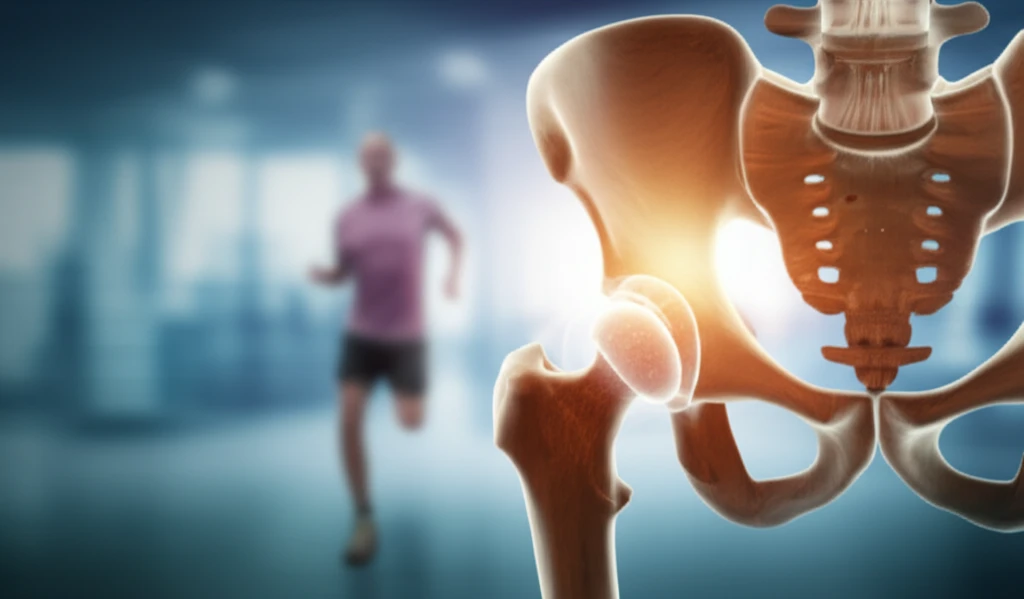
Hemi-Resurfacing: Can This Hip Procedure Preserve Bone for the Long Haul?
"A look at how hemi-resurfacing can be a viable option for younger patients needing hip preservation."
For surgeons treating young patients, managing Ficat stage III and IV hip osteonecrosis remains a significant challenge. Because the initial orthopedic procedure is often the first step in a lifetime treatment plan, a conservative approach is frequently advised. Since the early 1980s, hemiresurfacing arthroplasties of the hip have been employed in young patients to preserve bone stock in order to "buy time" before inserting a bearing with a total hip arthroplasty (THA) or full resurfacing procedure, which carries the risk of wear debris.
With a mean survival of 7.5 years, survivorship has been recorded at 79% and 45% at 5 and 15 years, respectively (1). Though implant longevity depends on a number of variables, the quality of acetabular articular cartilage at the time of surgery and the patient's level of activity are of utmost importance.
Generally speaking, full hip resurfacing with polyethylene had poor survivorship due to debris-induced osteolysis, which damaged not only the surrounding acetabular bone but also the femoral head. Stress shielding has been blamed for the failure of some resurfaced femoral head designs. There has been little research on the survival and architecture of the femoral bone to assess bone remodeling or stress shielding, partly because of the bone's deterioration following wear debris caused osteolysis.
Hemi-Resurfacing: A Bone-Preserving Strategy

Hemi-resurfacing arthroplasty is a surgical technique used primarily in younger patients with conditions like osteonecrosis (bone death due to lack of blood supply) or hip dysplasia. Unlike total hip replacement, which involves replacing both the ball (femoral head) and socket (acetabulum) of the hip joint, hemi-resurfacing replaces only the femoral head with a prosthetic cap. The goal is to alleviate pain and improve hip function while preserving as much of the patient's natural bone as possible. This approach is particularly appealing for younger, more active individuals who may eventually need a total hip replacement but want to delay it as long as possible.
- Careful Evaluation: Assessing the patient's overall health, bone quality, and the condition of the acetabulum (hip socket).
- Femoral Head Reshaping: The damaged femoral head is reshaped to fit the prosthetic cap.
- Prosthetic Cap Placement: A metal or ceramic cap is then cemented or press-fit onto the prepared femoral head.
- Ensuring Stability: The surgeon ensures proper alignment and stability of the hip joint.
Looking Ahead: The Future of Hemi-Resurfacing
The cases examined show how hemi-resurfacing can offer considerable long-term advantages in carefully selected individuals, even with the inevitable requirement for subsequent surgery. The decision to use hemi-resurfacing must be made in light of the patient's expectations, degree of activity, and the state of the acetabular cartilage.
To further enhance the longevity and outcomes of hemi-resurfacing, research is still being done. This covers advancements in surgical methods, the use of novel materials, and a more thorough comprehension of how the hip joint biomechanics affect long-term bone preservation.
Even with more recent developments like metal-on-metal hybrid hip resurfacing and better fixation procedures, these early hemi-resurfacing instances offer insightful information on femoral fixation, bone remodeling, and neck preservation in the absence of wear debris-induced osteolysis. These findings highlight the value of hemi-resurfacing as a viable treatment option for young individuals with particular hip conditions, providing a means to postpone more extensive treatments while maintaining bone health and hip function.
